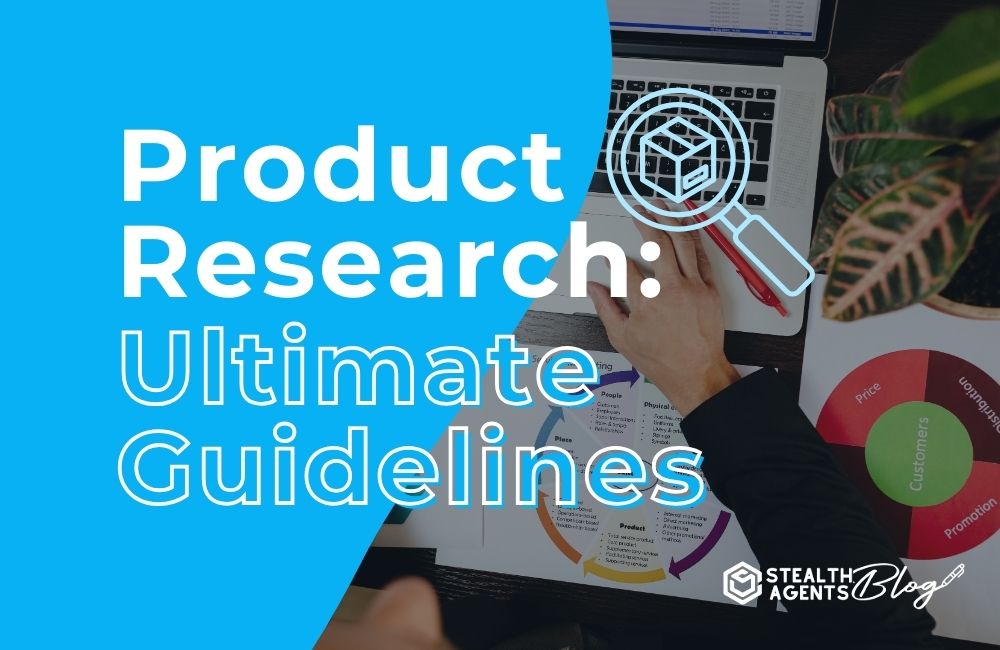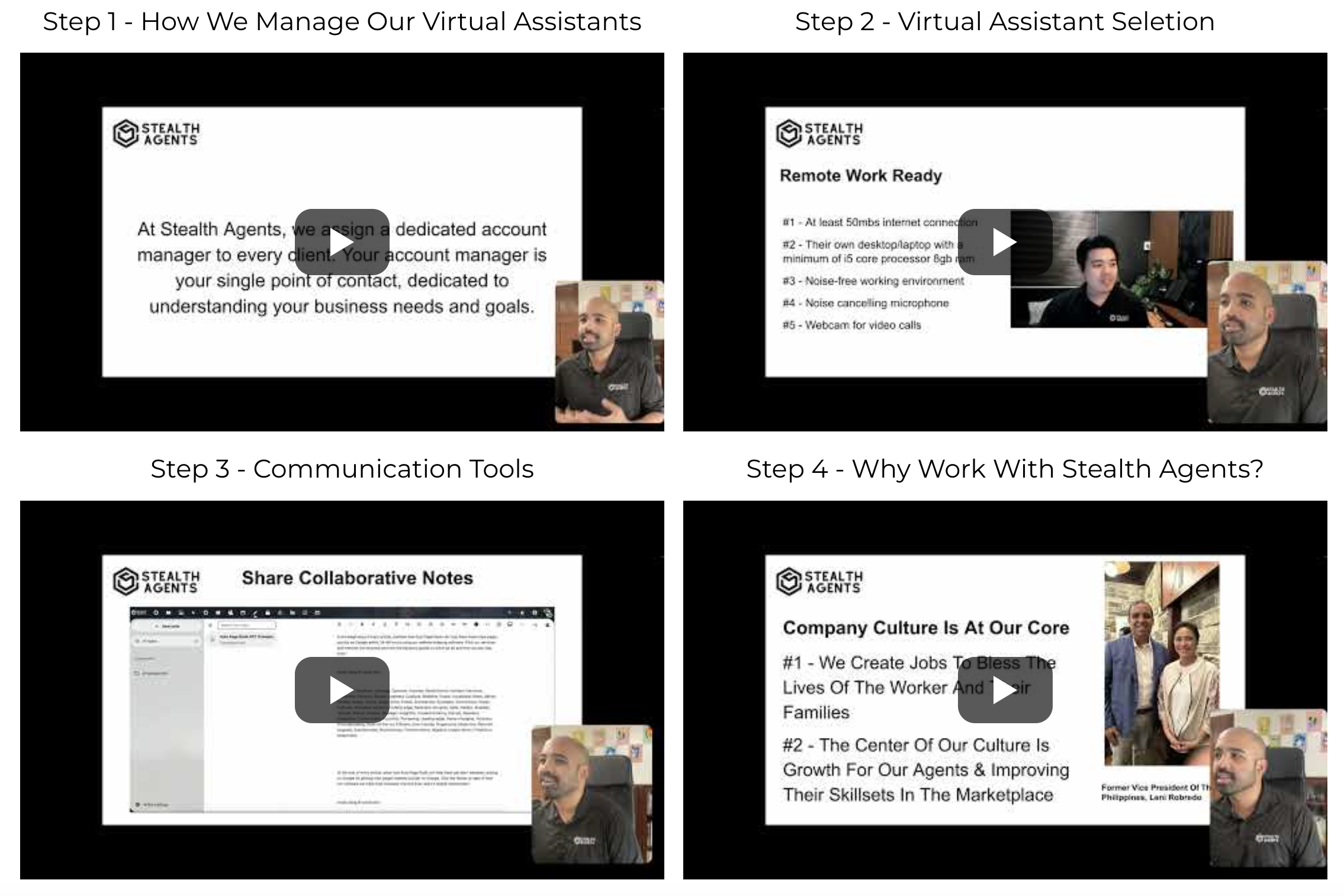Understanding and meeting customer needs is crucial for success.
Whether you are an entrepreneur launching a new product, a product manager seeking to improve an existing one, or a market researcher gathering insights, product research is an indispensable tool.
It helps you uncover valuable information about your target audience, their preferences, and the gaps in the market that your product can fill.
This blog post is designed to provide you with the ultimate guidelines for conducting effective product research.
Scale your operations efficiently by hiring an Airbnb virtual assistant from Stealth Agents.
Save on full-time staff costs and boost productivity with affordable price.
Book a free consultation today!
What is Product Research?
Product research involves gathering and analyzing data to better understand the market, customer needs, and potential demand for a product.
This process encompasses various methods such as surveys, interviews, focus groups, and competitive analysis.
By leveraging these techniques, businesses can make informed decisions about product development, marketing strategies, and overall business growth.
Why is Product Research Important?
Informed Decision-Making
Product research provides entrepreneurs, product managers, and business analysts with the necessary data to make informed decisions.
By understanding customer preferences and market trends, businesses can develop products that resonate with their target audience.
This reduces the risk of failure and increases the chances of success.
Identifying Market Gaps
Through thorough research, businesses can identify gaps in the market that represent opportunities for innovation.
These gaps might be unmet customer needs, underserved segments, or areas where competitors are lacking.
By addressing these gaps, startups and innovators can create unique value propositions and gain a competitive edge.
Enhancing Customer Satisfaction
Understanding customer needs and pain points allows businesses to tailor their products to better meet those needs.
This leads to higher customer satisfaction and loyalty.
Satisfied customers are more likely to become brand advocates, spreading positive word-of-mouth and contributing to business growth.
What is Product Research?
Product research involves gathering and analyzing data about consumer needs, market trends, and competitive products to make informed decisions about product development.
It helps businesses identify opportunities, assess the viability of a new product, and understand the competitive landscape.
Why is Product Research Important?
- Informed Decision Making: Product research provides data-driven insights that help you make informed decisions about product features, pricing, and marketing strategies.
- Identify Market Needs: Understanding consumer needs and preferences enables you to create products that truly resonate with your target audience.
- Reduce Risk: By analyzing market trends and competitors, you can mitigate risks associated with launching a new product.
- Competitive Advantage: Product research allows you to identify gaps in the market that your competitors may have overlooked, giving you a competitive edge.
Steps to Conduct Effective Product Research
1. Define Your Objectives
Before you begin your research, it’s crucial to define clear objectives.
What do you want to achieve through your product research?
Are you looking to identify a new market opportunity, understand consumer preferences, or analyze competitors?
Having clear objectives will guide your research process and ensure you gather relevant data.
2. Identify Your Target Market
Understanding your target market is essential for effective product research.
Identify the demographics, psychographics, and behaviors of your potential customers.
Consider factors such as age, gender, income level, lifestyle, and buying habits.
This information will help you tailor your research efforts to gather data that is most relevant to your target audience.
3. Conduct Market Analysis
Market analysis involves researching the overall market environment, including market size, growth rate, and trends.
Use sources such as industry reports, market research firms, and government publications to gather data.
This analysis will provide you with a comprehensive understanding of the market landscape and help you identify potential opportunities and threats.
4. Analyze Competitors
Competitive analysis is a critical component of product research.
Identify your direct and indirect competitors and analyze their product offerings, pricing strategies, marketing tactics, and customer reviews.
This analysis will help you understand the strengths and weaknesses of your competitors and identify areas where you can differentiate your product.
5. Gather Customer Insights
Customer insights are invaluable for product research.
Use surveys, interviews, focus groups, and social media listening to gather feedback from your potential customers.
Ask questions about their needs, preferences, pain points, and buying behavior.
This qualitative data will provide you with a deeper understanding of your target audience and help you create products that meet their needs.
6. Test and Validate Your Ideas
Once you have gathered and analyzed your data, it’s time to test and validate your product ideas.
Create prototypes or minimum viable products (MVPs) and conduct usability testing with your target audience.
Gather feedback on the product’s features, design, and functionality.
Use this feedback to refine your product and ensure it meets the needs and expectations of your customers.
7. Assess Market Viability
Assessing market viability is essential to ensure that your product has the potential for success in the current market environment.
Conduct a thorough market assessment by analyzing factors such as market size, growth trends, customer demographics, and purchasing power.
This analysis will help you determine whether there is sufficient demand for your product and inform your go-to-market strategy.
8. Develop a Comprehensive Marketing Strategy
A well-crafted marketing strategy can be the difference between a successful product launch and a lackluster performance.
Develop a marketing plan that outlines your target audience, value proposition, marketing channels, and promotional tactics.
Utilize a mix of digital marketing (such as social media, content marketing, and email campaigns) and traditional marketing methods (like PR and events) to reach your audience effectively.
9. Monitor and Adapt to Market Changes
The market landscape is continually evolving, and staying ahead requires constant vigilance and adaptability.
Implement a system to continuously monitor market trends, customer feedback, competitor activities, and industry news.
Use this information to make data-driven decisions and adjust your product, marketing strategy, and business operations as needed to address new opportunities and challenges.
10. Leverage Technology and Innovation
In a rapidly evolving market, leveraging the latest technology and innovation can give you a competitive edge.
Invest in research and development to explore new technologies that can enhance your product’s features, improve manufacturing processes, or offer a better customer experience.
Staying innovative not only helps you stay relevant but also opens up opportunities to create groundbreaking products that can transform the market.
11. Build Strong Relationships with Stakeholders
Building and maintaining strong relationships with stakeholders such as suppliers, distributors, and customers is crucial for long-term success.
Foster open communication, trust, and collaboration with your stakeholders to ensure smooth operations and mutual benefits.
Engaging with your stakeholders regularly can also provide you with valuable insights and support that can drive your business forward.
Practical Applications of Product Research
1. Customer-Centric Product Development
Product research enables businesses to adopt a customer-centric approach to product development.
By understanding customer needs and pain points, businesses can create products that address these issues effectively.
This not only enhances customer satisfaction but also increases the likelihood of product success in the market.
2. Market Entry Strategies
For startups and innovators, product research is essential for developing effective market entry strategies.
By analyzing market trends, customer preferences, and competitive landscapes, businesses can identify the best entry points and positioning strategies.
This reduces the risk of failure and maximizes the chances of capturing market share.
How brands us product research?
1. Apple Inc.
Apple is known for its meticulous product research and development process. Before launching a new product, Apple conducts extensive research to understand customer needs and preferences.
This customer-centric approach has been a key factor in the success of products like the iPhone, iPad, and MacBook.
By consistently delivering products that meet customer expectations, Apple has built a loyal customer base and a strong brand reputation.
2. Airbnb
Airbnb uses product research to continually enhance its platform and improve the user experience.
The company gathers feedback from hosts and guests through surveys, interviews, and usability testing.
This data-driven approach has enabled Airbnb to introduce new features, improve existing ones, and expand its offerings.
By prioritizing customer needs and preferences, Airbnb has become a global leader in the hospitality industry.
3. Coca-Cola
Coca-Cola leverages product research to innovate and diversify its product portfolio.
The company regularly conducts market research to identify emerging trends and consumer preferences.
This has led to the introduction of successful products like Coke Zero, Coca-Cola Life, and a range of flavored beverages.
By staying attuned to changing market dynamics, Coca-Cola has maintained its position as a leading beverage brand.
Takeaways
In the competitive business landscape, understanding and meeting customer needs is paramount.
Product research provides entrepreneurs, product managers, market researchers, startups, business analysts, and innovators with the insights they need to make informed decisions and create products that resonate with their target audience.












